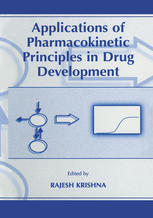

Most ebook files are in PDF format, so you can easily read them using various software such as Foxit Reader or directly on the Google Chrome browser.
Some ebook files are released by publishers in other formats such as .awz, .mobi, .epub, .fb2, etc. You may need to install specific software to read these formats on mobile/PC, such as Calibre.
Please read the tutorial at this link: https://ebookbell.com/faq
We offer FREE conversion to the popular formats you request; however, this may take some time. Therefore, right after payment, please email us, and we will try to provide the service as quickly as possible.
For some exceptional file formats or broken links (if any), please refrain from opening any disputes. Instead, email us first, and we will try to assist within a maximum of 6 hours.
EbookBell Team

4.7
86 reviewsThis volume is an important advancement in the application ofpharmacokinetic (PK) and pharmacodynamic (PO) principles to . drug development. The series of topics presented deal with the application of these tools to everyday decisions that a pharmaceutical scientist encounters. The ability to integrate these topics using PK and PO methods has optimized drug development pathways in the clinic. New technologies in the areas of in vitro assays that are more predictive of human absorption and metabolism and advancement in bioanalytical assays are leading the way to minimize drug failures in later, more expensive clinical development programs. of Pharmacokinetics and pharmacodynamics have become an important component understanding the drug action on the body and is becoming increasingly important in drug labeling due to it's potential for predicting drug behavior in populations that may be difficult to study in adequate numbers during drug development. The ability to correlate drug exposure to effect and model it during the drug development value chain provides valuable insight into optimizing the next steps to derive maximum information from each study. These principles and modeling techniques have resulted in an expanded and integrated view of PK and PO and have led to the expectations that we may be able to optimally design clinical trials and eventually lead us to identifying the optimal therapy for the patient, while minimizing cost and speeding up drug development. There is wide utility for the book both as a text and as a reference.